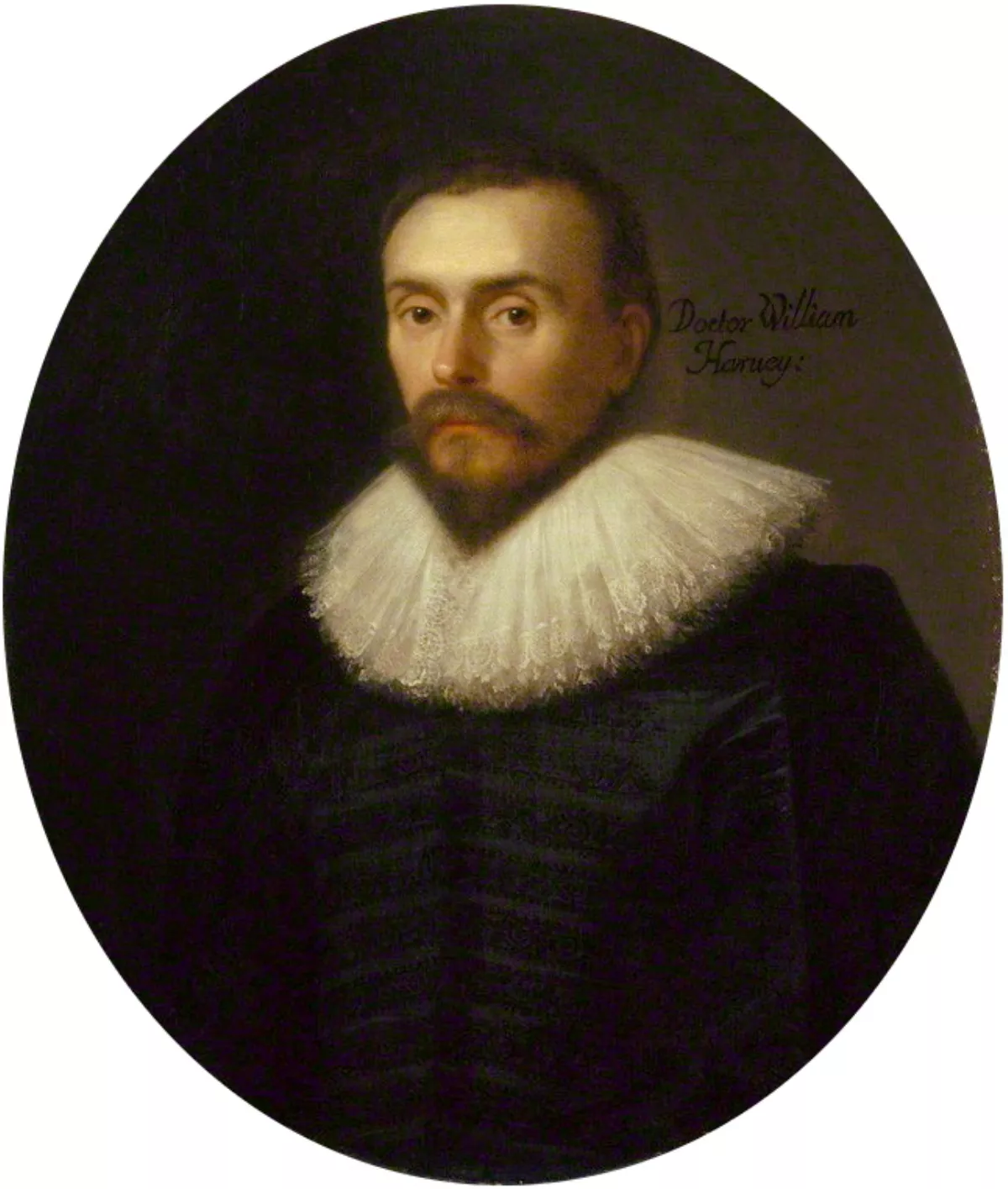 1.
1. William Harvey was an English physician who made influential contributions to anatomy and physiology.

 1.
1. William Harvey was an English physician who made influential contributions to anatomy and physiology.
William Harvey was the first known physician to describe completely, and in detail, pulmonary and systemic circulation as well as the specific process of blood being pumped to the brain and the rest of the body by the heart.
William Harvey was the eldest of nine children, seven sons and two daughters, of Thomas and his wife Joan Halke.
William Harvey stayed at the King's School for five years, after which he matriculated at Gonville and Caius College, Cambridge in 1593.
William Harvey graduated as a Bachelor of Arts from Caius in 1597.
William Harvey then travelled through France and Germany to Italy, where he entered the University of Padua, in 1599.
William Harvey then accepted a position at St Bartholomew's Hospital that he was to occupy for almost all the rest of his life.
William Harvey earned around thirty-three pounds a year and lived in a small house in Ludgate, although two houses in West Smithfield were attached as fringe benefits to the post of Physician.
At the beginning of his lectures, William Harvey laid down the canons for his guidance:.
William Harvey seems to have similarly served various aristocrats, including Lord Chancellor Bacon.
Bacon entirely failed to impress the more practical-minded William Harvey, who refused to regard him as a great philosopher.
William Harvey was re-elected 'Censor' of the College of Physicians in 1629, having been elected for the first time in 1613 and the second time in 1625.
William Harvey was one of the examiners of four women from Lancashire accused of witchcraft in 1634, and as a consequence of his report, all of them were acquitted.
William Harvey put down a saucer of milk and called to a toad which came out and drank the milk.
William Harvey then sent her out to fetch some ale, killed the toad and dissected it, concluding that it was a perfectly ordinary animal and not supernatural in any way.
At the age of fifty-two, William Harvey received commands from the king to accompany the Duke of Lennox during his trip abroad.
William Harvey accompanied King Charles I wherever he went as 'Physician in Ordinary'.
The conflicts of the Civil War soon led King Charles to Oxford, with William Harvey attending, where the physician was made "Doctor of Physic" in 1642 and later Warden of Merton College in 1645.
Now sixty-eight years old and childless, William Harvey had lost three brothers and his wife by this time.
William Harvey thus decided to return to London, and lived with his brothers Eliab and Daniel at different periods.
Several attempts to bring William Harvey back into the 'working world' were made, however; here is an excerpt of one of William Harvey's answers:.
William Harvey knew there were then no hopes of his recovery, so presently he sends for his young nephews to come up to him.
William Harvey then made signs to let him blood his tongue, which did him little or no good, and so ended his days, dying in the evening of the day on which he was stricken, the palsy giving him an easy passport.
William Harvey's will distributed his material goods and wealth throughout his extended family and left a substantial amount of money to the Royal College of Physicians.
William Harvey was buried in St Andrew's Church in Hempstead in northern Essex.
The conditions of William Harvey's burial are known: "William Harvey was laid in the chapel between the bodies of his two nieces, and like them he was lapt in lead, coffin less".
On St Luke's Day, 18 October 1883, William Harvey's remains were reinterred, the leaden case carried from the vault by eight Fellows of the College of Physicians, and deposited in a sarcophagus containing his works and an inscription:.
William Harvey had just witnessed the heart's ability to recover from fatigue.
William Harvey estimated that the capacity of the heart was 1.5 imperial fluid ounces, and that every time the heart pumps,.
William Harvey then noticed little bumps in the veins, which he realised were the valves of the veins discovered by his teacher, Hieronymus Fabricius.
William Harvey tried to push blood in the vein down the arm, but to no avail.
Contrary to a popular misconception, William Harvey did not predict the existence of capillaries.
William Harvey's observations convinced him that direct connection between veins and arteries are unnecessary; he wrote "blood permeates the pores" in the flesh and it is "absorbed and imbibed from every part" by the veins.
Pulmonary circulation was described by Renaldus Columbus, Andrea Cesalpino and Vesalius, before William Harvey would provide a refined and complete description of the circulatory system.
William Harvey had been working on it for many years but might never have finished it without the encouragement of his friend George Ent.
William Harvey used it to point to objects during his lectures.
The William Harvey Society, found in 1905, is based in New York City and hosts an annual lecture series on recent advances in biomedical sciences.
The main lecture theatre of the School of Clinical Medicine, University of Cambridge is named after William Harvey, who was an alumnus of the institute.